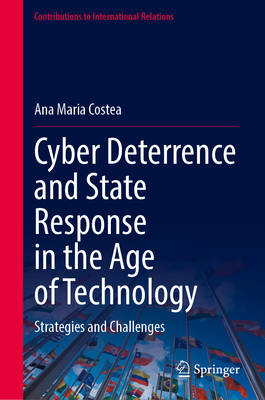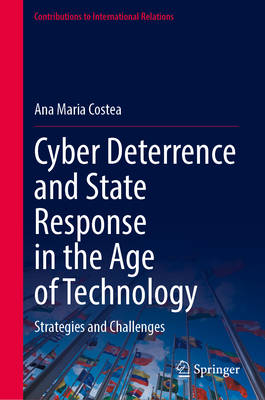
- Afhalen na 1 uur in een winkel met voorraad
- Gratis thuislevering in België vanaf € 30
- Ruim aanbod met 7 miljoen producten
- Afhalen na 1 uur in een winkel met voorraad
- Gratis thuislevering in België vanaf € 30
- Ruim aanbod met 7 miljoen producten
Cyber Deterrence and State Response in the Age of Technology
Strategies and Challenges
Ana Maria CosteaOmschrijving
At a time when technological advances are creating new threats to national and international security, traditional views of security, war, and deterrence are becoming obsolete. This book examines the different cyber security strategies being developed by states. It reveals significant differences between conventional adversaries such as Russia, China, and the West, but also between allies such as NATO and EU members.
Despite the EU's efforts, no binding international rules have been established, and the Tallinn Manual remains a Western-centric interpretation of the laws of cyber warfare. At the same time, critical infrastructure is often in private hands, and the low cost of cyber attacks enables individuals to pose significant threats. This book discusses effective state strategies for protecting and projecting influence in cyberspace. By analysing national and international strategies, notable cyber attacks, and ethical concerns, it also offers policy recommendations for improving cyber deterrence in a rapidly evolving landscape.
The book will appeal to students, scholars, and researchers in international relations, law, security studies, cybersecurity, and political science, as well as policymakers and practitioners interested in a better understanding of cyber deterrence and cybersecurity.
Specificaties
Betrokkenen
- Auteur(s):
- Uitgeverij:
Inhoud
- Aantal bladzijden:
- 218
- Taal:
- Engels
- Reeks:
Eigenschappen
- Productcode (EAN):
- 9783032134493
- Verschijningsdatum:
- 15/02/2026
- Uitvoering:
- Hardcover
- Formaat:
- Genaaid
- Afmetingen:
- 155 mm x 235 mm

Alleen bij Standaard Boekhandel
Beoordelingen
We publiceren alleen reviews die voldoen aan de voorwaarden voor reviews. Bekijk onze voorwaarden voor reviews.








